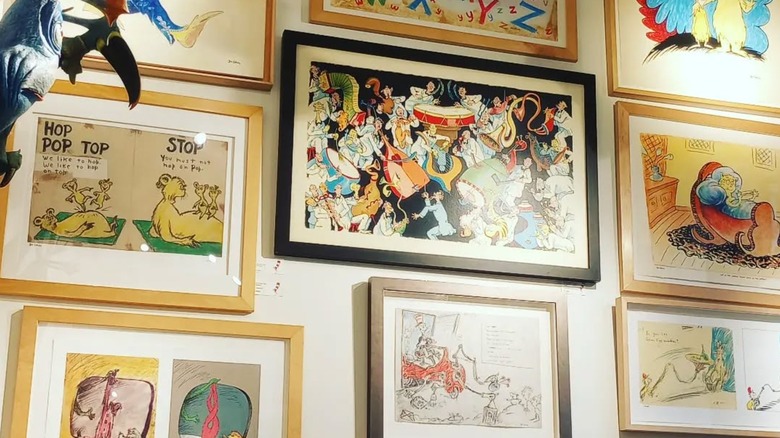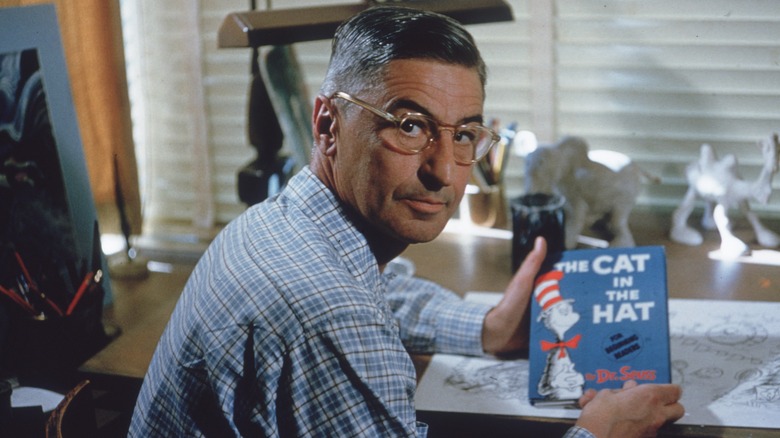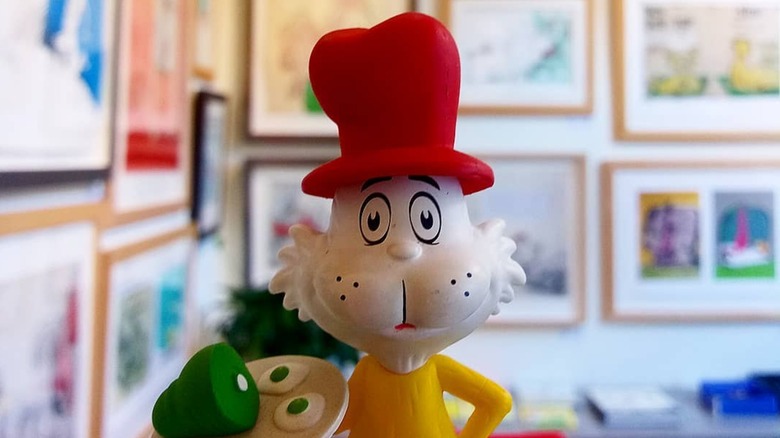Hidden In The Heart Of New Orleans Sits A Special Gallery Filled With Dr. Seuss' Art
Dr. Seuss and his flying balloons in "Oh the Places You'll Go" may have been the earliest muses that planted our love for travel: "Oh! The places you'll go! You'll be on your way up! You'll be seeing great sights! You'll join the high fliers who soar to high heights." How fitting it is that the quirky and whimsical work of Dr. Seuss can be experienced by visiting The Art of Dr. Seuss in the freewheeling N'awlins.
The Art of Dr. Seuss is a gallery that showcases Seuss' artwork beyond his most popular books. While "Green Eggs and Ham," "The Cat in the Hat," and other titles are beloved by children and adults worldwide and have been translated into 50 languages, many of us are unfamiliar with Dr. Seuss' other artworks. Located in the iconic French Quarter of New Orleans, The Art of Dr. Seuss showcases the author's sculptures, drawings, and other pieces and is neighbored by trendy boutiques, cocktail bars, antique shops, and legendary restaurants. In addition to the Old Absinthe House, the notorious 19th-century watering hole on Bourbon Street, and the Museum of Death's fascinating and gripping exhibitions about serial killers and NOLA's dark history, include The Art of Dr. Seuss in your itinerary while visiting the vibrant and electrifying Louisiana city.
The history of The Art of Dr. Seuss
Most of us know Dr. Seuss as a successful children's book author known for his surreal drawings, unforgettable characters, and mischievous stories that embrace phonetic learning. Dr. Seuss was the pen name of Theodor Seuss Geisel, a storyteller and illustrator born in 1904. Hailing from Springfield, Massachusetts, the young Geisel spent much of his childhood in the city's zoo, where his father was an honorary board member. His imagination was unleashed when his mother encouraged him to make animal caricatures on his bedroom walls. Over time, Dr. Seuss' aesthetics turned outlandish and kooky as his father provided antlers, horns, and bills of animals who died in the zoo, which became parts of sculptures.
Geisel started his career as a cartoonist and illustrator for various publications and advertising campaigns. He also spent time in Paris, where he soaked up the techniques and characteristics of Surrealist art. With a unique blend of influences, he went on to publish over 60 books until his death in 1991. His wife, Audrey, helped launch The Art of Dr. Seuss to honor her husband and introduce the public to the "Secret Art" he produced in his spare time.
The gallery contains works created by one of our favorite childhood authors, and yet, they're often darker, more abstract, and even more fanciful. Many of these pieces were never shown during Dr. Seuss' lifetime, though he had always hoped they would see the light of day after his passing. His dream came true with the opening of The Art of Dr. Seuss in 1997, where fans and collectors can experience Dr. Seuss' private self through his art.
The gallery is a must-visit for Dr. Seuss super fans
The gallery showcases Dr. Seuss' abundant talent and unique perspective beyond his illustrated books. Fans and collectors can now see and acquire prints and sculptures reproduced from the artist's original works. You can find limited edition prints of colored illustrations and original text from some of his most iconic books, as well as more mature-theme paintings and drawings from his secret archive. You can also experience his vivid imagination in the tactile form through cast resin sculptures, such as "The Indistinct Cat." Perhaps the most memorable collection from the gallery is the Collection of Unorthodox Taxidermy, where you will find hand-painted cast resin busts of some of Dr. Seuss' most bizarre and charming creatures. These busts were recreated from the 18 original sculptures the author made in the 1930s using the animal parts his father acquired from the zoo. If the artworks are beyond your souvenir budget, you can pick up one of the exquisite coffee table books that chronicles the life and works of Dr. Seuss.
After visiting the gallery, you can continue to explore the amazing French Quarter. If you are hungry, consider visiting the famous Napoleon House, an extraordinary establishment serving classic Creole cuisine. Hanging out in the restaurant will transport you back to the Big Easy's yesteryear through the restaurant's meticulously preserved interior and old-timey vibes, where you can indulge in a plate of spicy jambalaya or a fresh po'boy.


